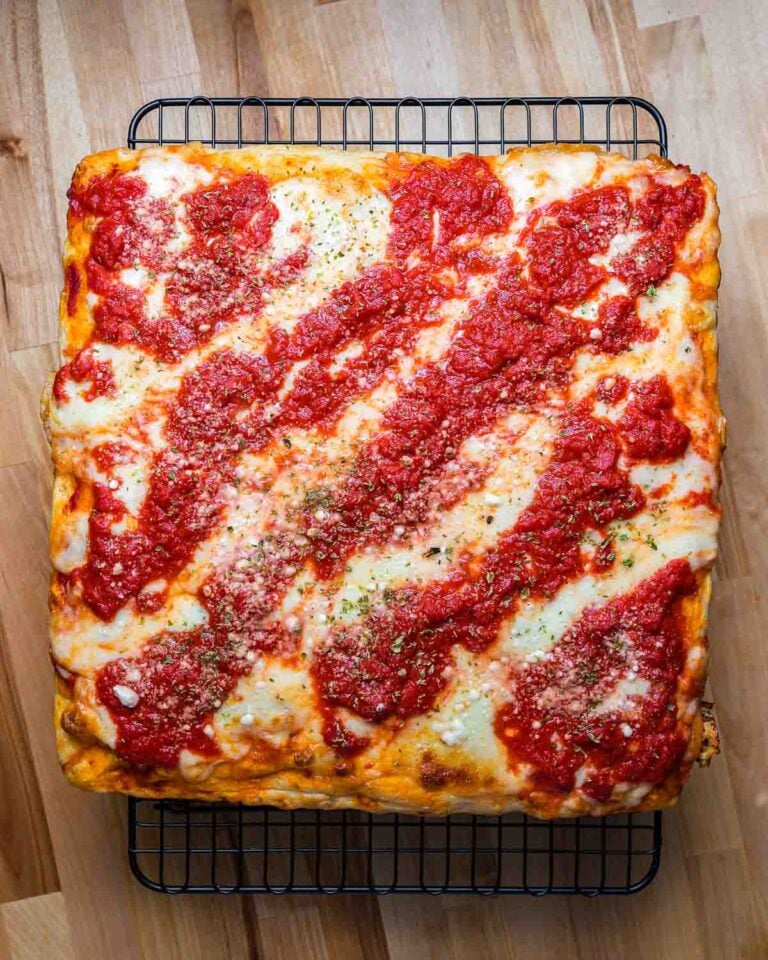Sicilian Vs New York Pizza: A Comprehensive Comparison Of Two Pizza Legends
Pizza lovers across the globe often find themselves torn between two iconic styles: Sicilian and New York pizza. Both offer unique flavors, textures, and histories that make them beloved by millions. If you're curious about what sets these two pizza styles apart, this article will provide a detailed comparison to help you decide which one suits your palate better.
From their origins to their ingredients and preparation methods, Sicilian and New York pizzas have distinct characteristics that reflect their cultural roots. This article dives deep into the nuances of each style, offering insights into their histories, taste profiles, and why they continue to captivate pizza enthusiasts worldwide.
Whether you're a casual pizza fan or a die-hard connoisseur, understanding the differences between Sicilian and New York pizza can enhance your dining experience. Let's explore the fascinating world of pizza and discover which style reigns supreme for you.
- Risper Biyaki
- Parkland Veterinary Hospital Parkland Fl
- Flightposite Metallic Gold
- Omar Apollo Chicago
- 73520 Highway 111 A Palm Desert California 92260 United States
Table of Contents
- The History of Sicilian vs New York Pizza
- Key Ingredients and Flavor Profiles
- Preparation Techniques
- Size and Slicing Differences
- Texture and Crust Characteristics
- Popularity and Cultural Impact
- Nutritional Comparison
- Cost Comparison
- Popular Toppings for Each Style
- The Dining Experience
The History of Sicilian vs New York Pizza
Origins of Sicilian Pizza
Sicilian pizza traces its roots back to the island of Sicily in Italy. Known as "sfincione," this thick-crusted pizza was originally a rustic dish made with bread dough topped with onions, anchovies, and breadcrumbs. Over time, it evolved into the square-shaped, thick-crusted pizza we know today. Its rich history reflects the agricultural abundance of Sicily, where fresh ingredients like tomatoes, cheese, and herbs were readily available.
Evolution of New York Pizza
New York pizza, on the other hand, has its origins in the early 20th century when Italian immigrants brought their pizza-making traditions to the United States. The thin, foldable slices became a staple in New York City, catering to the fast-paced lifestyle of urban dwellers. The use of coal-fired ovens and high-quality mozzarella cheese contributed to the distinct flavor and texture of New York-style pizza.
Key Ingredients and Flavor Profiles
Ingredients for Sicilian Pizza
Sicilian pizza is characterized by its use of simple yet flavorful ingredients. The dough is typically made with bread flour, water, yeast, salt, and olive oil, giving it a rich and slightly crispy crust. Toppings often include tomato sauce, mozzarella cheese, and sometimes additional ingredients like onions, garlic, or basil. The flavor profile is bold yet balanced, with a focus on the natural sweetness of the ingredients.
Ingredients for New York Pizza
New York pizza relies on high-gluten flour to achieve its signature thin and chewy crust. The dough is stretched thinly and baked at high temperatures, resulting in a crisp bottom and soft interior. Traditional toppings include tomato sauce, mozzarella cheese, and occasionally pepperoni or sausage. The flavor is tangy and savory, with a focus on achieving a perfect balance between the crust, sauce, and cheese.
Preparation Techniques
Both Sicilian and New York pizzas have distinct preparation methods that contribute to their unique characteristics. Sicilian pizza is baked in a rectangular pan, allowing the dough to rise and develop a thick crust. New York pizza, on the other hand, is baked on a flat surface, often in a coal-fired or gas oven, which results in a thin, crispy crust. These methods highlight the differences in texture and presentation between the two styles.
Size and Slicing Differences
When it comes to size, Sicilian pizza is typically served in large, square slices, making it ideal for sharing. Each slice is hearty and filling, perfect for a satisfying meal. In contrast, New York pizza is known for its long, foldable slices, which are easy to eat on the go. The smaller size of each slice allows for more slices per pie, making it a popular choice for group settings.
Texture and Crust Characteristics
Sicilian Crust
The crust of Sicilian pizza is thick and airy, with a slightly crispy exterior and a soft, pillowy interior. This texture is achieved through a longer fermentation process and the use of olive oil in the dough. The result is a crust that is both satisfying and flavorful, providing a perfect base for the toppings.
New York Crust
New York pizza crust, on the other hand, is thin and chewy, with a crisp bottom and a soft, pliable center. This texture is ideal for folding the pizza in half, making it easy to eat while walking. The high-gluten flour and high-temperature baking contribute to the crust's signature texture, which is both crunchy and flexible.
Popularity and Cultural Impact
Both Sicilian and New York pizzas have made a significant impact on global cuisine. Sicilian pizza, with its rustic charm and hearty flavor, has become a staple in Italian-American communities. New York pizza, with its convenience and affordability, has become a symbol of urban life and is enjoyed by millions worldwide. Each style has its own unique appeal, catering to different tastes and preferences.
Nutritional Comparison
From a nutritional standpoint, both Sicilian and New York pizzas offer different benefits. Sicilian pizza, with its thicker crust and generous toppings, tends to be higher in calories and carbohydrates. However, it also provides more fiber and healthy fats due to the olive oil in the dough. New York pizza, with its thinner crust and smaller slices, is generally lower in calories but may contain more sodium due to the use of processed cheese and toppings.
Cost Comparison
The cost of Sicilian and New York pizzas can vary depending on the location and ingredients used. Generally, Sicilian pizza is more expensive due to its larger size and the use of premium ingredients. New York pizza, with its smaller slices and simpler preparation, is often more affordable, making it a popular choice for budget-conscious consumers.
Popular Toppings for Each Style
Sicilian Toppings
- Tomato sauce
- Mozzarella cheese
- Onions
- Garlic
- Pepperoni
New York Toppings
- Tomato sauce
- Mozzarella cheese
- Pepperoni
- Sausage
- Mushrooms
The Dining Experience
The experience of eating Sicilian and New York pizza is as distinct as the pizzas themselves. Sicilian pizza is often enjoyed in a sit-down setting, where the focus is on savoring the flavors and textures of each bite. New York pizza, with its foldable slices and on-the-go convenience, is perfect for a quick meal or snack. Both styles offer a unique dining experience that reflects their cultural heritage and culinary traditions.
Conclusion
In conclusion, Sicilian and New York pizzas each offer something special for pizza lovers. Whether you prefer the thick, hearty crust of Sicilian pizza or the thin, foldable slices of New York pizza, both styles have their own unique appeal. By understanding the differences between these two pizza legends, you can make an informed choice about which style suits your taste preferences.
We invite you to share your thoughts and experiences in the comments below. Which style do you prefer, and why? Don't forget to explore our other articles for more insights into the world of pizza and beyond. Thank you for reading!
Data sources: Pizza Today, Serious Eats, Food & Wine.

New York Sicilian Pizza Sip and Feast

New York Sicilian Pizza Sip and Feast